#Mogao Caves
Text

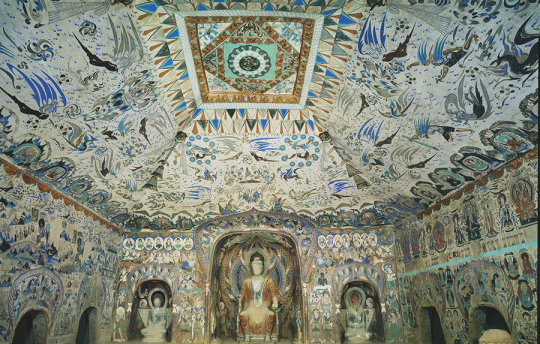
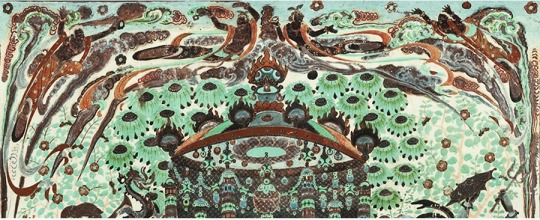



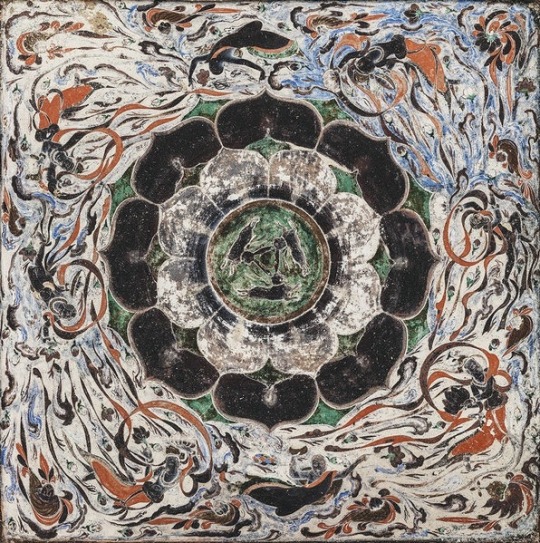
Incredible art from the Northern Wei Dynasty, Mogao Caves, 4th century
My brief experience seeing Wei Dynasty art in North China taught me it's some of the most refined in Chinese history
[Photo/Chinaculture.org]
683 notes
·
View notes
Text




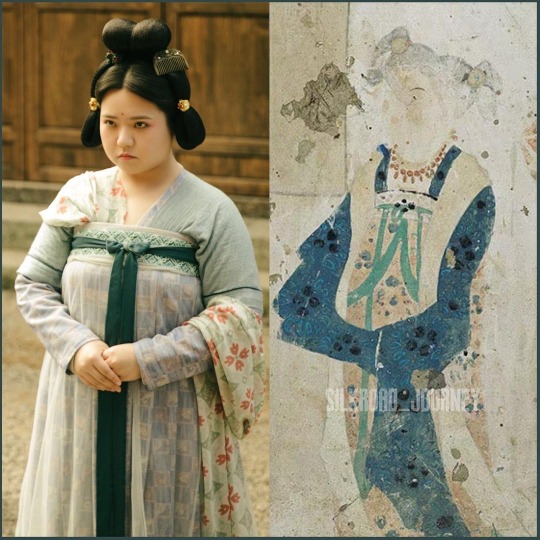
Tang dynasty period drama (Luoyang 风起洛阳) 2021
Most of the C-drama costumes are restored based on real Tang dynasty paintings from the Mogao Caves. These are some examples.
Photos credit: silkroad_journey on Instagram.
#chinese history#chinese culture#hanfu#tang dynasty#Buddhism#mogao caves#China#silk road#ancient china#Medieval China#chinese drama#cdrama#hanfu recreation#Hanfu restoration#dynastic china#art
290 notes
·
View notes
Text
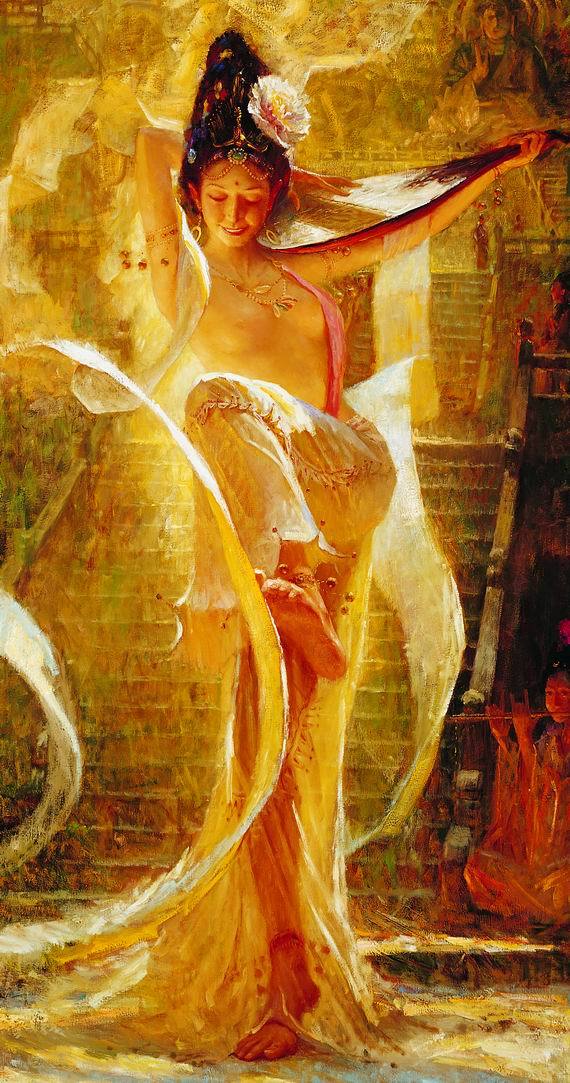





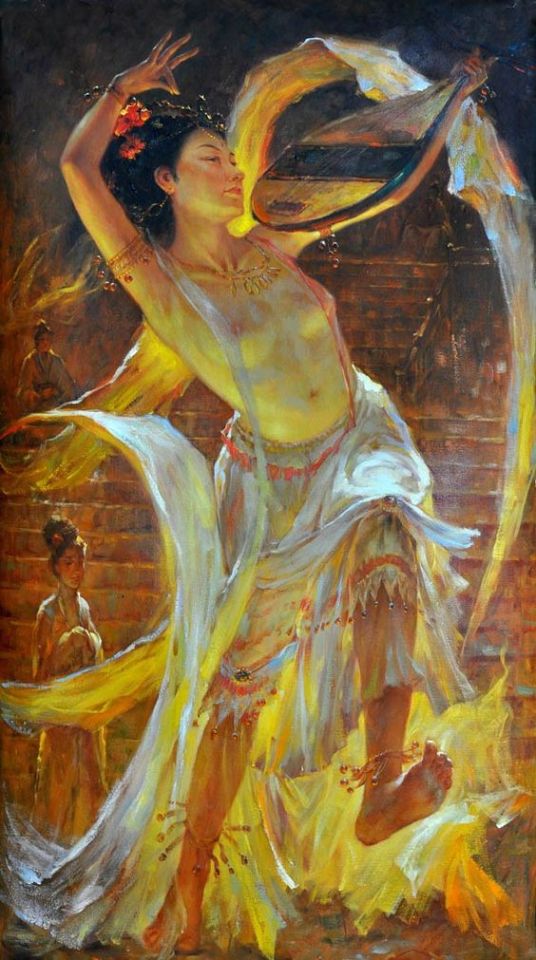


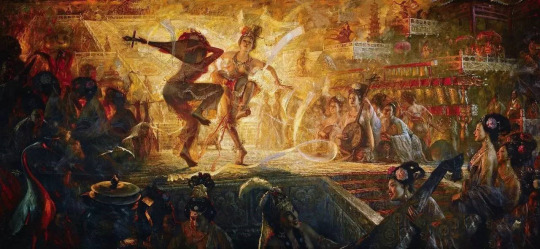


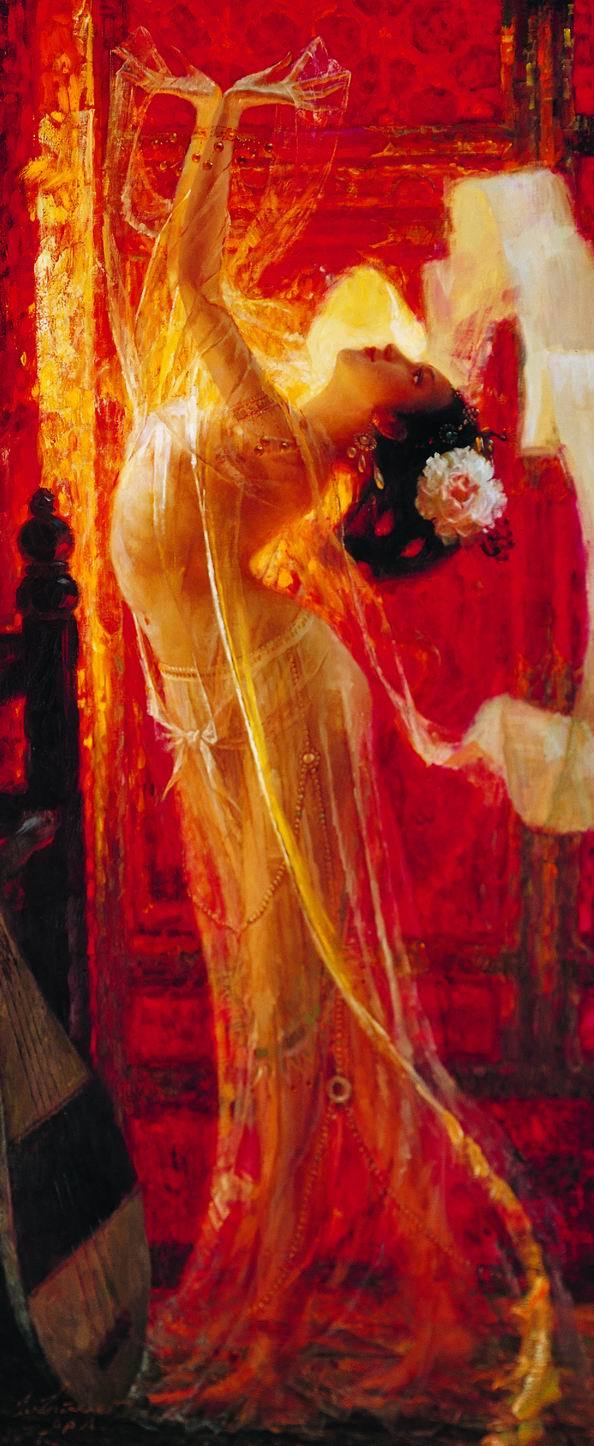
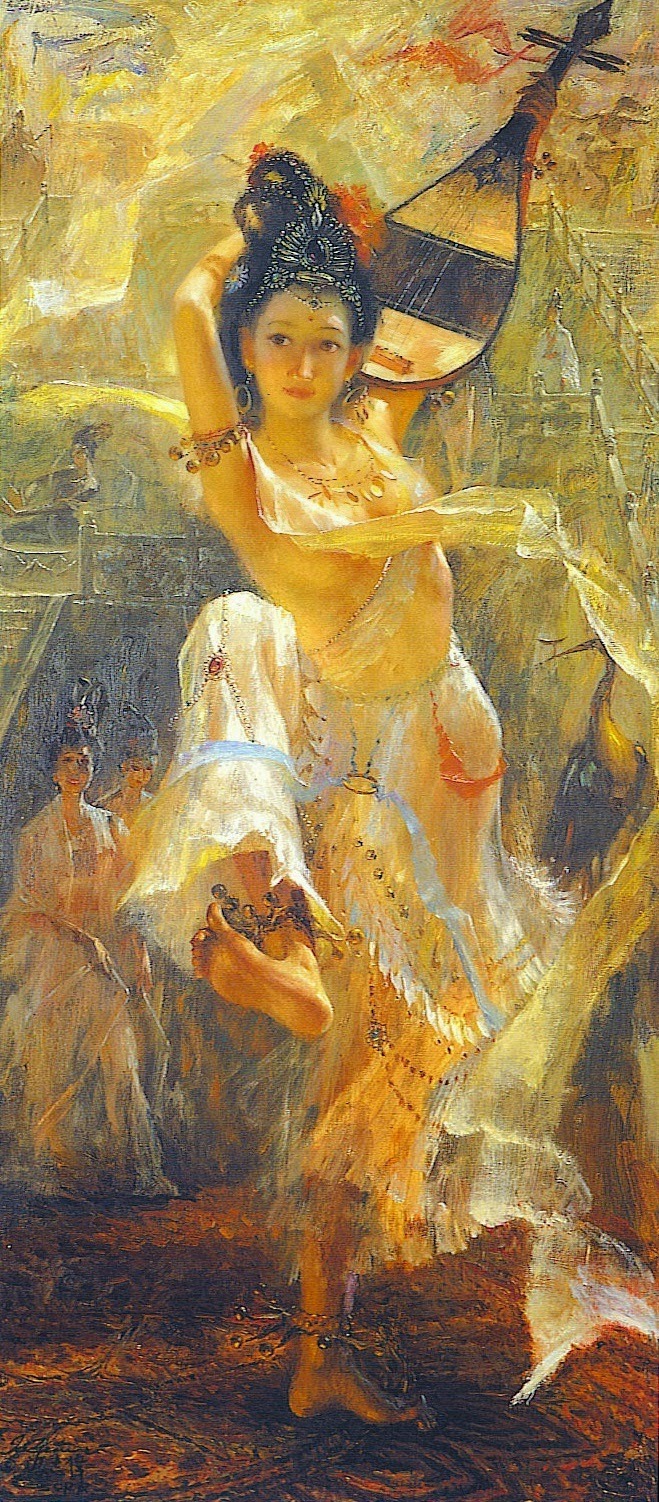


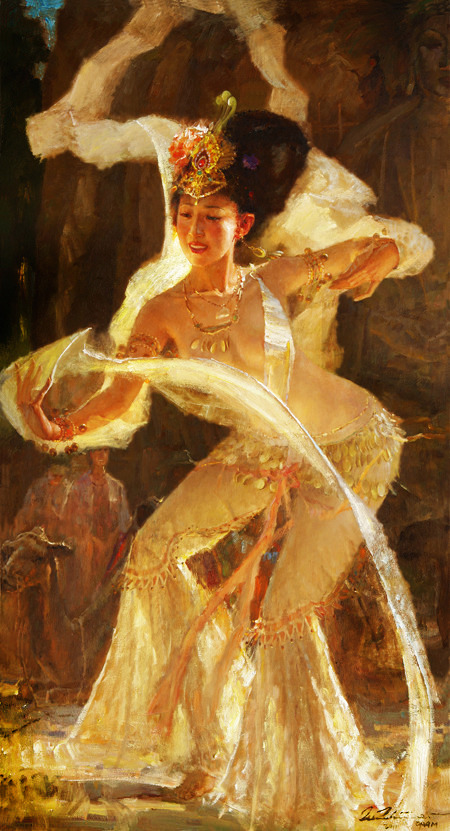


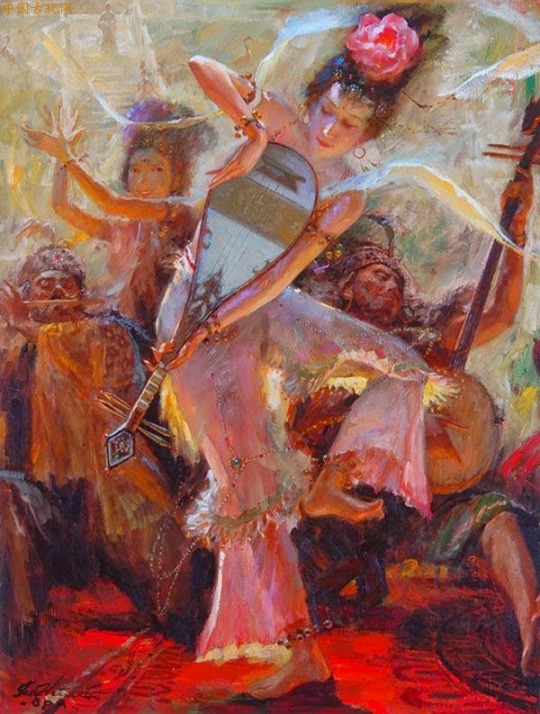




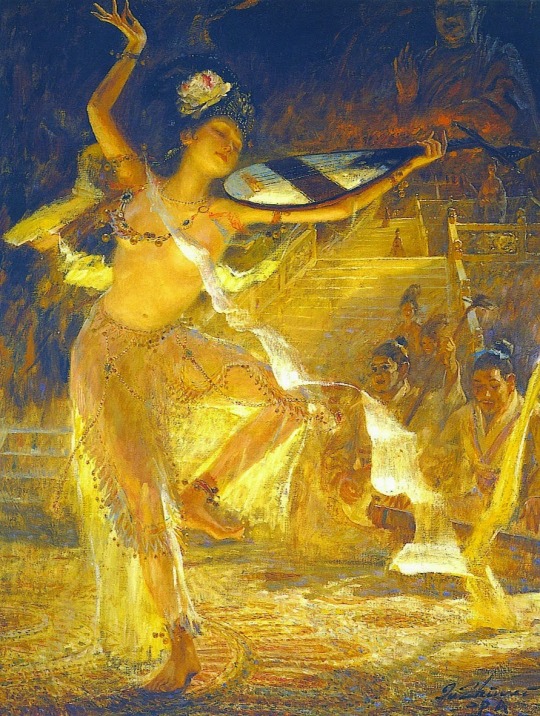




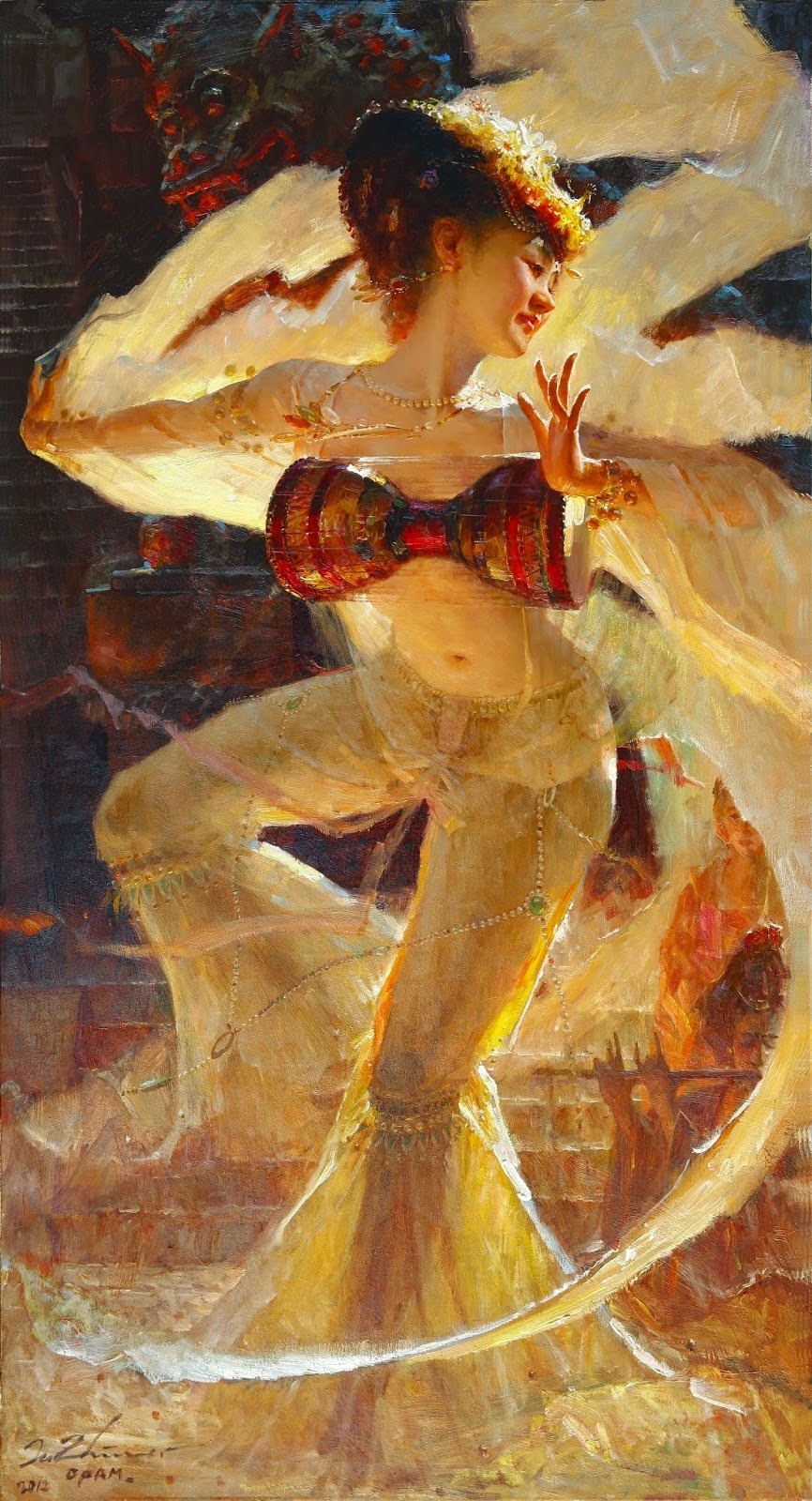
Joyful dance series, aka Buddhist dancers at Dunhuang, by Zhiwei Tu. More pics on my blog, link at bottom.
I believe these were generally based on Tang Dynasty images from the Mogao Caves at Dunhuang. All the ones I saw were labeled as paintings by Zhiwei Tu. Many of them are doing Sogdian style musical/dance performances, which became popular in China during the Tang era:
"The Sogdian Whirl and other similar, imported dances were popular in China during the Tang dynasty, especially in Chang'an and Luoyang.
The Sogdian merchant-dancers, who performed different dances but were especially renowned for this dance, were very famed in China. In the Sogdian Whirl, a young woman was spinning inside a circle. The Sogdian Whirl became popular in China. It was performed both in the Chinese court and in China itself. Sources from the Tang dynasty such as the Old Book of Tang attest to it being performed at court. The dance was performed at court by, among others, the Emperor Xuanzong of Tang and Yang Guifei.
The Sogdian Whirl was depicted in the funerary art of Sogdians in China. Further, it was depicted on many native Chinese tombs, which further shows its popularity in China."
-taken from Wikipedia
#history#ancient history#art#art history#dance history#asian art#paintings#ancient china#chinese#china#mogao caves#art detail#dance#dancers
78 notes
·
View notes
Text
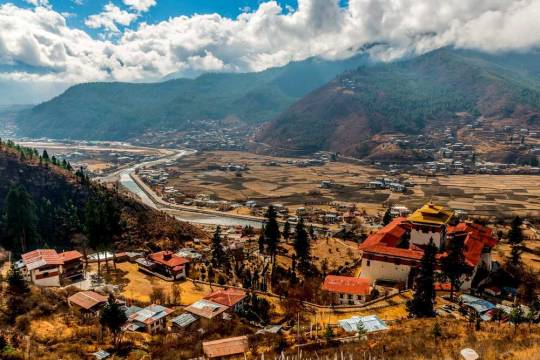
Paro
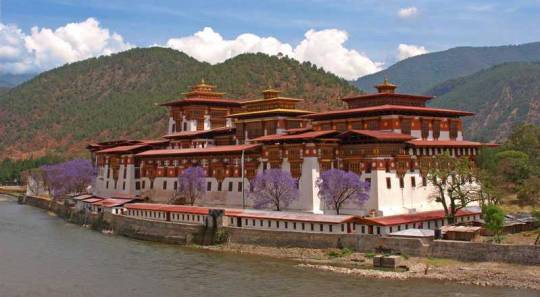
Punakha

Trongsa
#travelers#wanderlust#destinations#black panther#whosawgod#mogao caves#parola#bhutan#bhutan tour package#bhutan travel
19 notes
·
View notes
Text



Creative teapot, inspired by the desert background and stone Buddha statues. It's strong, simple, and profound.
6 notes
·
View notes
Text
Ultimate China Journey: 30 Stops You Need to Make
#best places in China#Chengdu#Chengdu panda base#China top attractions#China tourism#China travel guide#Chinese cultural sites#exploring China#Forbidden City insights#Giant Panda Research Base#Great Wall of China tours#Guilin#Hangzhou#Hangzhou West Lake#Hong Kong#Hong Kong Disneyland#Huanglong Scenic Area#Huangshan#Huangshan adventure#iconic destinations in China#Jiuzhaigou Valley#Jiuzhaigou Valley trip#Leshan Giant Buddha#Li River#Li River cruise#Lijiang Old Town#Lijiang old town tour#Mogao Caves#Nanjing Massacre Memorial Hall#Potala Palace
1 note
·
View note
Photo
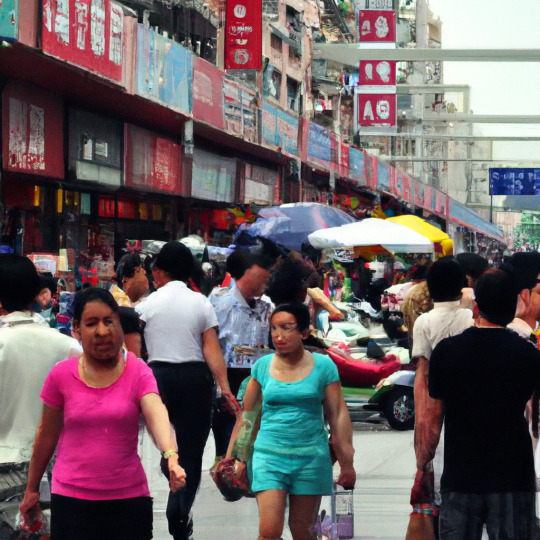
The unbearable heat and humidity are quickly causing the ancient heritage sites in China to crumble and decay. This is a great tragedy, as these sites are a part of our shared global history and must be preserved. The government is aware of the situation and is working hard to combat the elements, but it is a difficult battle. The people of China are saddened by the sight of these beautiful structures succumbing to the weather, but we must remember that they are still standing and that is something to be grateful for.
#environment#gansu#mogao caves#li zhao#rainwater#sites along the silk road#chinese painting#dunhuang#greenpeace#fault
1 note
·
View note
Photo


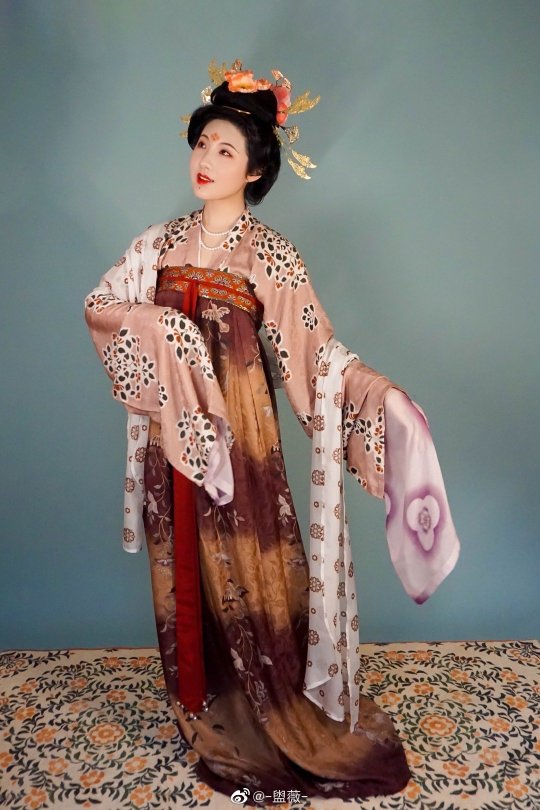






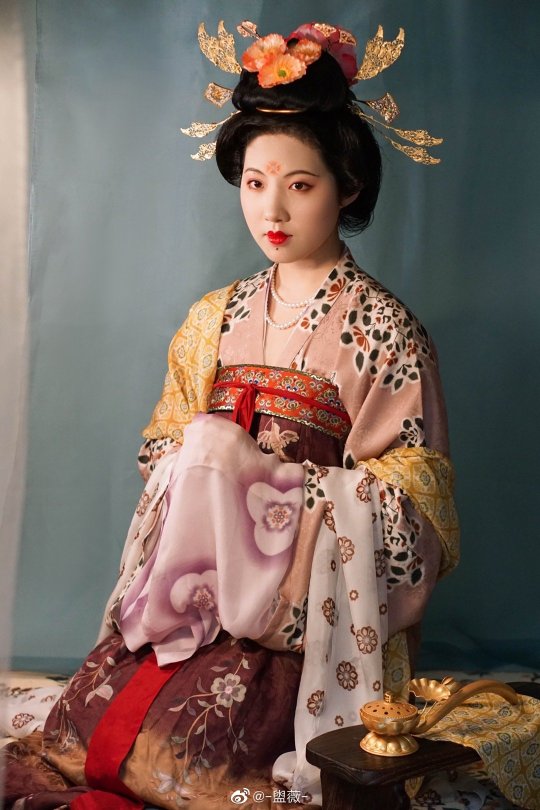
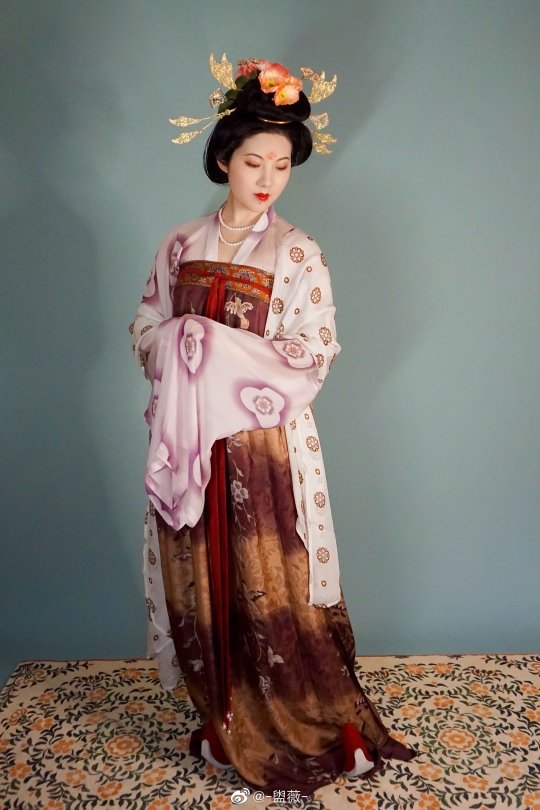

【Historical Artifacts Reference】
Skirt Pattern Reference:Tang Dynasty Murals<Mother and Daughter Doner>in Cave 12 of Dunhuang Mogao Grottoes.
※Due to the mural paint has long been oxidized, resulting in color differences※
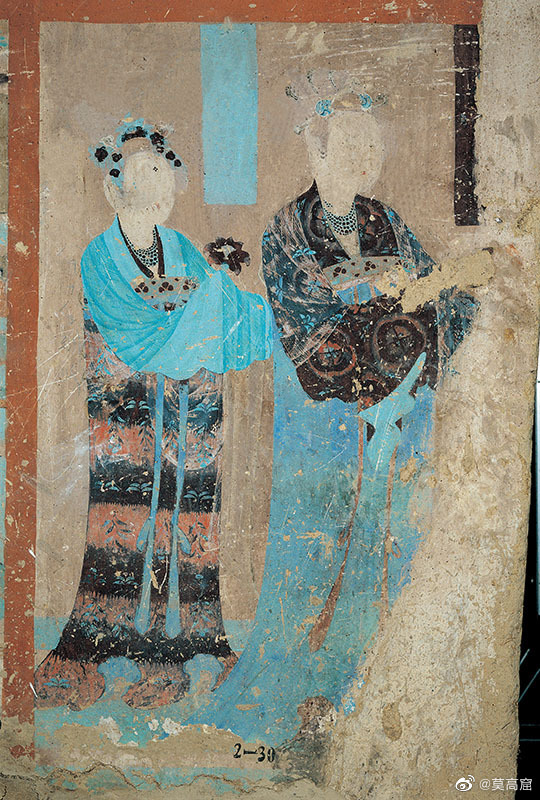
【Skirt Restoriation And Way Of Wearing Reference】
※Let the inner skirt show through the side※
China Five Dynasties and Ten Kingdoms Period:Murals From Tomb of Wang Chuzhi王處直(862–922)
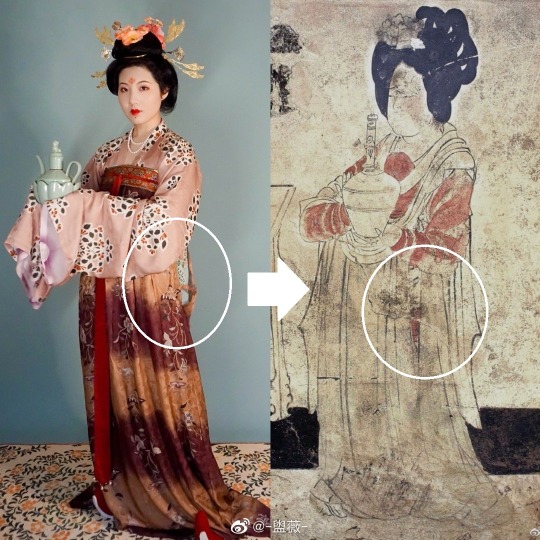
China Tang Dynasty Murals in Cave 159 of Dunhuang Mogao Grottoes.


【Tang Dynasty Hairpin Artifacts】


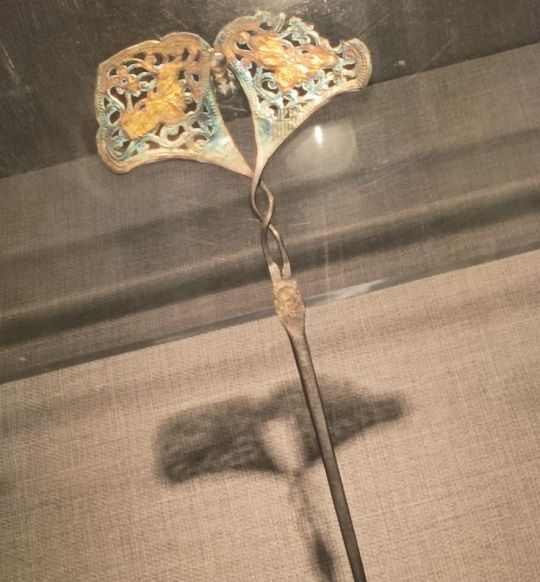


[Hanfu · 漢服]Chinese Tang Dynasty(618-907A.D)Traditional Clothing Refer to Tang Dynasty Dunhuang Mogao Grottoes Murals
Mid-Late Tang Dynasty Women's Attire
————————
📸Recreation Work:@-盥薇-
👗 Hanfu: @时合岁初传统服饰
🔗Weibo:https://weibo.com/3942003133/MC5n4viSt
————————
#Chinese Hanfu#Tang Dynasty(618-907A.D)#hanfu#chinese traditional clothing#chinese history#Mid-Late Tang Dynasty Period#hanfu history#chinese fashion history#ruqun#齊胸衫裙 qixiong shanqun#pibo 披帛#Chinese Culture#china#chinese#Huadian(花钿)#hanfu accessories#hanfu artifacts#Dunhuang Mogao Grottoes Cave#漢服#汉服#recreation#-盥薇-#时合岁初传统服饰#Tang Dynasty Hairpin Unearthed from the tomb of Wu King Wife Tomb#tang dynasty hairpin
236 notes
·
View notes
Text










The Cryptic Motif of “Three Hares with Conjoined Ears”
On the Heavenly Palace decorative patterns found in the Mogao Caves at Dunhuang from the late Northern dynasties are images with cryptic patterns, including Buddha's head, the Taotie beast, deer, animals copulating, three hares with conjoined ears, and also writings. This type of decorative pattern is cryptic and difficult to understand and may be closely related to the history of the popular Eastern iconology and divination philosophy from the Han and Wei dynasties and Emperor Wu of Northern Zhou's suppression of Buddhism. They are important references for studying the related history of this period.
#china#motif#three hares with conjoined ears#silk road#culture influenced by buddhism from ancient india#art#reference
682 notes
·
View notes
Text
Women wearing Tang Dynasty hanfu modeled after the depictions of patrons in the mural art of the Mogao Caves in Dunhuang (敦煌莫高窟).
They are posing in front of the Longmen Grottos (龙门石窟) in Luoyang, Henan.
324 notes
·
View notes
Text
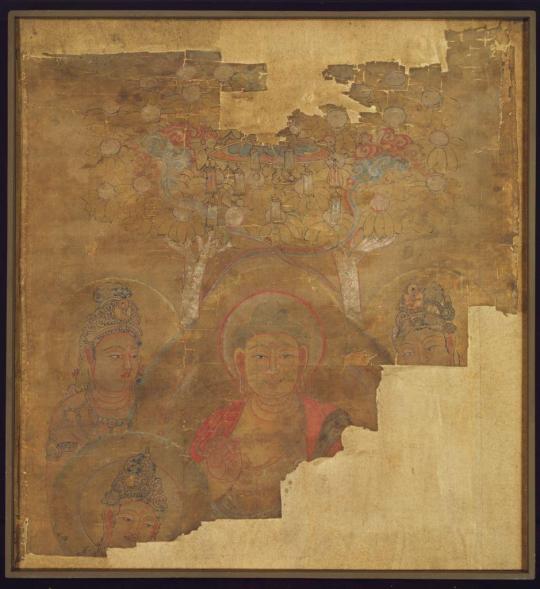
Unknown, Fragment of a painting of the Pure Land of the Buddha Amitabha
Tang Dynasty
700-750 from Mogao Caves, Dunhuang, Gansu Province
China
Very damaged silk. Several interpretations can be made of these figures: The Buddha Sakyamuni teaching the Law under the tree, or the Buddha Amitabha in his Pure Land, with Avalokitesvara and Mahasthamaprapta. However this last bodhisattva is recognizable
148 notes
·
View notes
Text

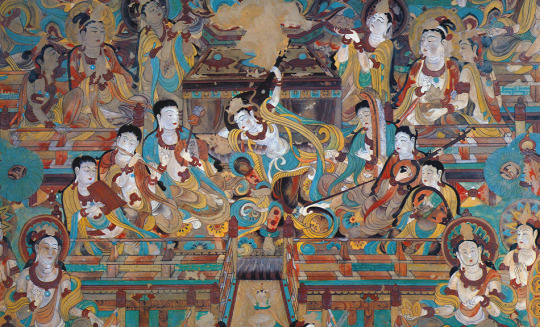
Chinese woman in Sogdian dancing style, the Jiyuetu from Mogao Cave 112, 8th C. CE. Mogao (Dunhuang) Cave 112 painting, left. Statue based on painting, unknown date, right.
#art history#art#ancient history#tang dynasty#ancient china#chinese#statue#sculpture#mogao caves#sogdiana#paintings#dance history
36 notes
·
View notes
Text
True worship can end the cycle of birth and death.
Take refuge in Spiritual leader Saint Rampal Ji Maharaj to attain salvation, eternal peace and happiness.

#black panther#wakanda forever#black tumblr#nepalese#wanderlust#mogao caves#bhutan tour package#bhutan travel#myanmar to import russian oil#maldives#myanmar#bhutan#santrampaljimaharaj#godkabir#muslim#hindu
3 notes
·
View notes
Text

painting from a mogao cave temple at dunhuang, northwestern china.
302 notes
·
View notes
Text

Legends of the humanoids
Reptilian humanoids (4)
Five Dragon Kings – the Five Coloured Dragons with Directions in ancient Chinese belief
Historically there arose a cult of the Five Dragon Kings in Chinese legend based on Wuxing (5 elements, Nature Philosophy on Taoist cosmology). The name Wufang longwang ( "Dragon Kings of the Five Regions/Directions") is registered in Taoist scripture from the Tang dynasty, found in the Dunhuang caves, also be known as the Magao caves.
Incorporating elements of traditional Chinese beliefs, the Five Elements, it associates the Five Dragon Kings and the five coloured dragons with the five directions. In the east, there is the Blue Dragon God King, who has 49 Dragon Kings under his command, who control 70 myriad myllion small dragons, mountain spirits and sundry charms. The document states that it is the work of the small dragons and spirits under the control of the Dragon King that cause poison and disease to people, and that they should pray to the Dragon King who oversees them for healing. The Red Dragon God King is located in the south, the White Dragon God, the White Dragon God King in the west, the Black Dragon God King in the north and the Yellow Dragon God King in the centre, each with a considerable number of Dragon Kings, countless small dragons and charmed demons.
The Azure Dragon or Blue-Green Dragon (Qīnglóng), or Green Dragon (Cānglóng), is the Dragon God of the east, and of the essence of spring. The Red Dragon (Chìlóng or Zhūlóng, literally "Cinnabar Dragon", "Vermilion Dragon") is the Dragon God of the south and of the essence of summer. The White Dragon (Báilóng) is the Dragon God of the west and the essence of autumn. The Yellow Dragon (Huánglóng) is the Dragon God of the center, associated with late summer. The Black Dragon (Hēilóng), also called "Dark Dragon" or "Mysterious Dragon" (Xuánlóng), is the Dragon God of the north and the essence of winter.
[Image bottom: One of the Buddha statues in Mogao Caves, China]

伝説のヒューマノイドたち
ヒト型爬虫類 (4)
五方龍王 〜 古代中国の信仰における五方位に結びつく五色の龍王
歴史上、中国の伝説には五行(5つの要素) に基づいた「五方龍王信仰」があった。敦煌石 (莫高窟) で発見された唐代の道教経典には、「五方龍王」という名前が記されている。
中国の伝統的な信仰の要素である五行 (道教の宇宙論に基づく自然哲学) を取り入れ、五龍王と五色の龍を五つの方角と関連付けている。東方には青龍神王がおり、配下に49の龍王をしたがえ、それらが70万億の小龍や山精・雜魅を従えている。この文書の趣旨は、四方八方どこにでも、人間を毒や病に侵す龍王の手先がいて、彼らの主である龍王に救済を祈り求めなければならないということだ。南方には赤龍神王、西方には白龍神王、北方には黒龍神王、中央には黄龍神王がおり、同様にそれぞれ相当数の龍王、無数の小龍、魅鬼などが配置される。
蒼龍または蒼緑龍(靑龍)、または緑龍(蒼龍)は、東の龍神であり、春の本質を表す。赤龍(辰砂龍 または 朱龍)は南の龍神で、夏の神である。白龍は西の龍神であり、秋の神である。黄龍(黃龍)は中央の龍神で、晩夏に関連している。黒龍(黑龍)は「暗龍」または「神秘龍(玄龍)」とも呼ばれ、北の龍神であり、冬の精髄である。
#humanoids#legendary creatures#hybrids#hybrid beasts#cryptids#therianthropy#legend#mythology#folklore#s.f.#nature#art#taoism#yin yang#chinese mythology#taoist cosmology#wuxing#5 dragon kings
135 notes
·
View notes
Text

A fresco of Sakyamuni Buddha's temptation by Mara in the Mogao Caves of Dunhuang, China. 950 AD. It also contains the earliest known representation of a gun (a fire lance) and a grenade (upper right).
40 notes
·
View notes